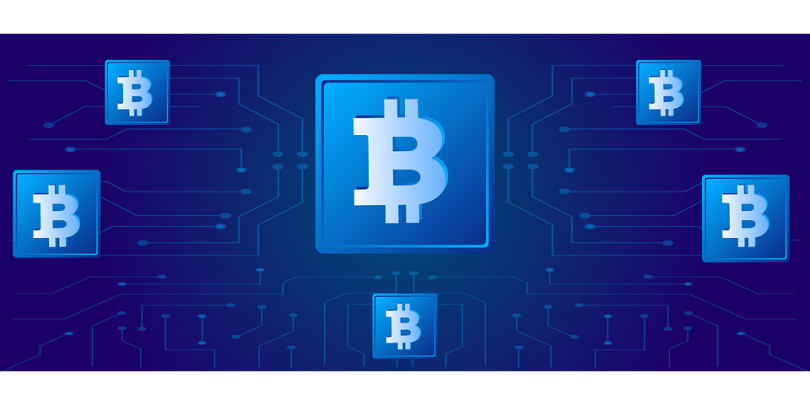Over the past year, popular cryptocurrencies have experienced a 90% decline in value due to a pessimistic trend in the cryptocurrency market. This collapse, akin to the post-cryptocurrency market excitement, has resulted in a decrease in interest in alternative coin investments. The market’s stabilization presents astute investors with an opportunity to identify undervalued projects with robust foundations and potential for growth. In this content, you will not only discover some of the top alternative coins to invest in in 2024 but also gain insights into the historical development and general characteristics of alternative coins.
Ethereum
One of the most prominent alternative cryptocurrencies for investment at present is Ethereum, which exhibits substantial potential. Vitalik Buterin, a renowned figure in the cryptocurrency industry, pioneered Ethereum in 2015. Following The Merge’s September 2022 transition to Proof-of-Stake, ETH holders will have the opportunity to stake their coins in exchange for network support and incentives. The success of Ethereum hinges on its widespread adoption within decentralized applications (dApps), transaction fees, and validator rewards.
Cardano (ADA)
Cardano (ADA), a prominent cryptocurrency, is dedicated to research and development aimed at addressing practical challenges. Established by Charles Hoskinson, its objective is to facilitate swift and secure transactions globally. The blockchain platform places a strong emphasis on scalability solutions, smart contracts, and rigorous academic research. Within the cryptocurrency landscape, ADA has garnered a substantial following, while simultaneously facing both support and criticism. Presently, its market capitalization surpasses $12.2 billion, with a current price of $0.34.
Litecoin (LTC)
Litecoin, a prominent cryptocurrency, is often referred to as the digital gold equivalent of Bitcoin. Launched in 2011, its primary objective was to establish itself as a widely adopted digital currency for savings. Currently, approximately 89.15% of the maximum supply of 84 million LTC is actively utilized.
A distinguishing advantage of Litecoin over Bitcoin lies in its significantly enhanced transaction processing speed, which is four times faster. Notably, Litecoin’s performance has been robust, with a 50% growth rate commencing in 2024. The Commodity Futures Trading Commission’s recognition of Litecoin as a commodity in March 2024 further bolstered investor confidence.
Analysts anticipate that Litecoin’s value will reach $163 by the end of 2024, positioning it as one of the most promising alternative cryptocurrencies for investment.
Tron (TRX)
The TRON platform equips developers with the necessary tools to create content and decentralized applications (dApps) while simultaneously earning rewards. The substantial value of TRON’s cryptocurrency, ranking 10th globally, is underpinned by its widespread popularity. Experts anticipate a second wave of growth, with Bitcoin potentially reaching $100,000 to $110,000 despite current market challenges. TRON is particularly suitable for micropayments due to its rapid and cost-effective transactions. Within decentralized applications such as file storage and oracles, the TRX cryptocurrency serves as a means of resource payments, voting, and rewards.
Launched in 2017, Binance Coin (BNB) serves as the native cryptocurrency of Binance. Its primary function is to support Binance’s growth by facilitating payments through the Binance Smart Chain and offering various advantages, including reduced trading fees and access to a comprehensive range of Binance ecosystem products. The surge in popularity of Binance and its limited supply, coupled with a deflationary burn program, significantly influences the value of BNB.
Solana (SOL)
Solana, a high-performance blockchain launched in 2017, addresses scalability and transaction speed concerns. Predictions suggest that Solana’s performance, low fees, and developer appeal could lead to a 30-40% increase in its token value during the third quarter of 2024. With over 450 projects in DeFi, NFTs, and GameFi, the ecosystem is expanding and increasing demand for SOL. Notable undertakings include Raydium and Serum. SOL is utilized for commissions, network transactions, and ecosystem management through staking.
Dogecoin (DOGE)
Originating as a joke cryptocurrency, Dogecoin has evolved into a fully functional coin with its own dedicated community. Established in 2013, Dogecoin serves various purposes, including donations, tips, and micropayments. It operates based on the Litecoin technology, which facilitates the generation of blocks in a span of one minute. Notably, Dogecoin experienced substantial growth in 2021, propelled by the participation of retail traders and the endorsement of Elon Musk. The cryptocurrency reached its peak value of $0.7 in 2021.
MATIC (polygon)
Polygon, formerly known as the Matic Network, was established in 2017 with the primary objective of enhancing scalability and reducing transaction costs on Ethereum and its associated blockchains. It currently supports over 7,000 decentralized applications (dApps), metaverse, NFT, and gaming projects by utilizing autonomous sidechains to achieve exceptionally high transaction rates. Within Polygon sidechains, MATIC cryptocurrency serves as the gas, facilitating transactions and incurring fees while simultaneously incentivizing the maintenance of the underlying infrastructure.
XRP (XRP)
In 2012, Jed McCaleb and Chris Larsen introduced the digital payment system Ripple. The Ripple blockchain is characterized by its high level of security and rapid transactions. Despite ongoing regulatory concerns from the Securities and Exchange Commission (SEC) regarding Ripple, there is significant potential for the value of the XRP coin to increase by 50–70%. Currently ranked seventh among cryptocurrencies, Ripple’s price has risen from $0.48 to $0.60, suggesting substantial growth opportunities for investors.
What is an altcoin?
Many individuals frequently conflate cryptocurrencies with Bitcoin, assuming they are interchangeable. To address this issue, a term was coined to designate all cryptocurrencies except Bitcoin. Cryptocurrencies created after Bitcoin are referred to as altcoins. Since the emergence of the first altcoins in 2011, thousands of variations have been developed. Altcoins present distinct characteristics, technologies, and functionalities in contrast to Bitcoin, the most widely recognized and established cryptocurrency.
Different Altcoin Types
There are several fundamental categories of altcoins:
Utility tokens, such as ETH, TRX, BNB, OKB, MANA, and others, are cryptocurrencies or exchange tokens that serve specific purposes. Utility tokens are the most prevalent type of token.
In the blockchain, security tokens represent various assets or rights, including stocks, bonds, and copyrights. Examples include BCAP, EXOD, and ASPD.
Stablecoins are cryptocurrencies with a stable exchange rate that is correlated with the value of gold, fiat money, or other cryptocurrency assets. Their primary function is to preserve value. Notable stablecoins include USDT, BUSD, and DAI.
“Meme coins,” such as DOGE and SHIB, are cryptocurrencies created as jokes or memes and often serve practical purposes.
Governance tokens grant users the ability to vote and participate in project management. Examples include UNI and TRON Power.
In addition to the aforementioned categories, altcoins also include forks, which are digital currencies created by dividing the original coin’s blockchain, similar to Bitcoin. Forks can be categorized as follows:
Soft forks seamlessly integrate with the previous blockchain iteration and can be revertible.
Hard forks are incompatible with the original blockchain and produce an alternative currency that cannot operate on the same network.
Bitcoin Cash, developed as a variant of Bitcoin for regular payments, exemplifies a fork. It currently has a valuation of approximately $2.3 billion.
Positives and Negatives :
Some traits are shared by all altcoins, despite their individuality.
Advantages:
Altcoins have several advantages over Bitcoin, some of which are as follows:
Innovation:
altcoins typically have technical benefits over Bitcoin, especially when it comes to solving difficulties that are unique to this cryptocurrency, such scalability concerns or transaction rates that aren’t quick enough.
Benefit:
Each alternative cryptocurrency possesses a distinct purpose that distinguishes it from its counterparts. Bitcoin’s primary objective is to establish itself as a decentralized digital currency that embodies the attributes of traditional currencies, serving as a unit of account, a medium of exchange, and a savings instrument.
Drawbacks
Among the primary drawbacks are the following:
Liquidity: Compared to Bitcoin, most altcoins have far less liquidity. This has a direct bearing on the cryptocurrency’s market volume. Altcoin pairs typically have bigger spreads than bitcoin pairs because less liquidity means higher trading expenses. For conventional currency pairs, the circumstances are comparable. Because major pairs like USDEUR are more liquid, their spreads are tighter than those of exotic pairs like EURTRY or non-major ones like GBPJPY.
Longevity: cryptocurrencies have lost a large amount of their value due to the abandonment of several projects that were supporting them.
Furthermore, it is crucial to remember that digital currencies are decentralized, which means that there is no central bank to regulate them. As a result, investing in these assets has a higher risk.
Keep in mind that historical performance is not a good predictor of future outcomes before making any cryptocurrency investments.
FAQ
Should I invest in altcoins or Bitcoin first?
Now, picture yourself as an alchemist who creates a special elixir that will make you feel fantastic by combining liquids. Bitcoin, altcoins, or both may be rising or falling depending on when you’re reading this. Put another way, mix bitcoin and altcoins in your portfolio according on your risk tolerance; use bitcoin to increase safety and altcoins to optimize your gains.
Do altcoins make sense as an investment?
Prospective investors often harbor concerns regarding the purchase of alternative cryptocurrencies (altcoins). Altcoins offer a diverse range of features, applications, and technologies, which inherently entails significant risks. While some altcoins, such as Ethereum, have established themselves as stable platforms with substantial market adoption, others are perceived as riskier and more speculative. For Bitcoin investors, altcoins present an opportunity for diversification. Unlike Bitcoin, which is commonly regarded as a store of value, several altcoins, including Litecoin, Ether, and Ripple’s XRP, are designed with specific objectives and applications in mind.
Which three altcoins are the most popular?
The market for cryptocurrencies is dynamic, with rankings shifting regularly. Notable altcoins at the most recent update were Cardano (ADA), Ethereum (ETH), and Binance Coin (BNB). These altcoins’ distinctive qualities and significant market sway highlight their dominant positions in the cryptocurrency space.
What does the future hold for altcoins?
Altcoins have a vibrant future ahead of them, with both opportunities and challenges:
The availability of altcoins may be impacted by cryptocurrency exchanges’ adaptation to regulatory crackdowns; the changing regulatory landscape necessitates compliance such as KYC and AML; The clarity of regulations affects institutional cryptocurrency investments;Because of changes in regulations and technological breakthroughs, market volatility continues to exist.Altcoin initiatives prioritize industrial integration and technology breakthroughs; It is anticipated that cryptocurrency initiatives would cooperate and consolidate in order to overcome regulatory obstacles and promote innovation.
Start a Cryptocurrency exchange Try our crypto exchange platform click here.
Disclaimer: It is crucial to acknowledge that the content provided in this article does not constitute financial or investment guidance. The opinions expressed herein are exclusively those of the author and should not be construed as specific recommendations for trading or investing activities. Readers and visitors to the website are strongly advised to thoroughly research and consider diverse viewpoints before engaging in cryptocurrency investments. We do not assume any responsibility for the reliability or accuracy of the information presented.







